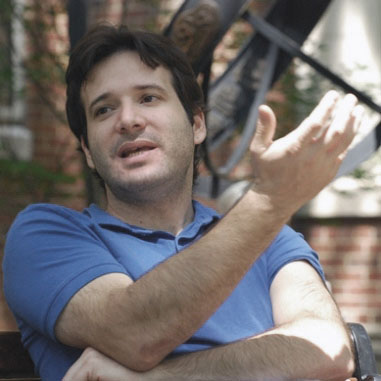 The history of the evolutionary tree of life, from Greek philosophers to twenty-first-century scientists, gives insights into the origin and transitions of the theory through western civilization. While approaches have been diverse, elements progressing into increasing complexity over time is a constant theme.
The history of the evolutionary tree of life, from Greek philosophers to twenty-first-century scientists, gives insights into the origin and transitions of the theory through western civilization. While approaches have been diverse, elements progressing into increasing complexity over time is a constant theme.
Porphyry (234–305 BC), a third-century Greek philosopher, composed the first known tree of life in his work entitled Isagoge while living in Sicily. Isagoge is an “Introduction” Porphyry edited into Aristotle‘s (384–322 BC) text known as Categories.
Ancient Evolution Trees
 In the Isagoge, Porphyry included a hierarchical classification of genera and species, now known as the Tree of Porphyry (pictured right). The text, written in Greek and later translated into Latin by Boethius, emerged as a standard medieval textbook on logic in European schools and universities.
In the Isagoge, Porphyry included a hierarchical classification of genera and species, now known as the Tree of Porphyry (pictured right). The text, written in Greek and later translated into Latin by Boethius, emerged as a standard medieval textbook on logic in European schools and universities.
The roots of the first evolutionary tree of life concept emerged from Greek philosophy. For Porphyry, the tree, as a logical construct, was more suggestive than definitive. The tree, though, raised issues. As Porphyry explains –
“I shall naturally decline to say, concerning genera and species, whether they subsist, whether they are pure isolated conceptions… This sort of problem is of the very deepest and requires more extensive investigation.”
Twenty-First Century Trees
Evolutionary scientists have taken Porphyry’s challenge to “sort out the problems of the very deepest” through “extensive investigation.” To approach the problems, scientists have used diverse methods throughout the centuries.
Until the late twentieth century, scientists primarily used evidence from the fossil record. Since then, advances in technologies have opened new avenues of investigation. Phylogenetics entered center-stage starting in the mid-twentieth century to discover Darwin’s “successive, slight” changes.
Since paleontologists have struggled to find transitional links in the fossil record, scientists are increasingly turning to evidence in molecular biology. According to the University of California, Berkeley, Evolution 101 website said –
“phylogenetic systematics… is the way that biologists reconstruct the pattern of events that have led to the distribution and diversity of life.”
In the words of Wikipedia, “Phylogenetic analyses have become essential in researching the evolutionary tree of life.”
DNA Sequencing
Advances in DNA sequencing technology and bioinformatics have empowered scientists to compare the sequence of hundreds of genes, sometimes entire genomes, among many different species, creating a tree of  life more detailed than ever before.
life more detailed than ever before.
Leonidas Salichos (pictured right), and Antonis Rokas, of Vanderbilt University, in the paper entitled “Inferring ancient divergences requires genes with strong phylogenetic signals” published last month in the prestigious journal Nature, illustrate the continuing depth of Porphyry’s and Darwin’s problem.
In the study, Salichos’ team selected 23 species of yeast, one of the simplest known organisms, and focused on 1,070 genes using a process known as concatenation. This process involves stringing together all the sequence data from individual species into one mega-gene and then comparing that long sequence among the different species and creating a ‘tree of life.’
Of the 1,070 genes studied, however, only ten genes (less than 10%) were found useful in creating a ‘tree of life even within these 23 yeast species.
“They report that every single one of the 1,070 genes conflicts somewhat,” said Michael Donoghue, an evolutionary biologist at Yale who was not involved in the study in an interview with Emily Singer. “We are trying to figure out the phylogenetic relationships of 1.8 million species and can’t even sort out 20 [types of] yeast,” he said.
Phylogenetic Critics
 In the Simons Foundation article entitled “a new approach to building the tree of life,” Singer (pictured right) noted the problem –
In the Simons Foundation article entitled “a new approach to building the tree of life,” Singer (pictured right) noted the problem –
“Every gene they studied appears to tell a slightly different story of evolution.”
“Just about all the trees from individual genes were in conflict with the tree based on a concatenated data set,” said Khidir Hilu, a biologist at Virginia Tech in Blacksburg. “It’s a bit shocking.”
According to W. Ford Doolittle, a geneticist of Dalhousie University in Nova Scotia, molecular biology –
“failed to find the ‘true tree,’ not because their methods are inadequate or because they have chosen the wrong genes, but because the history of life cannot properly be represented as a tree.”
Evolutionary scientists tooled with twenty-first-century technologies concur with Porphyry’s angst over an evolutionary tree of life –
“I shall naturally decline to say, concerning genera and species, whether they subsist, whether they are pure isolated conceptions… This sort of problem is of the very deepest and requires more extensive investigation.”
The evolution tree of life drawings, rooted in ancient philosophy, started as a problem in Greek philosophy, remains a problem when investigated with twenty-first-century biotechnology. Darwin’s dilemma intensifies.
Genesis
 Only scientific theories compatible with the Genesis account eventually prove to be valid. Like Swedish botanist, physician, and zoologist, Carolus Linnaeus’ (1707-1778) theory of species. As Linnaeus explained during the Scientific Revolution –
Only scientific theories compatible with the Genesis account eventually prove to be valid. Like Swedish botanist, physician, and zoologist, Carolus Linnaeus’ (1707-1778) theory of species. As Linnaeus explained during the Scientific Revolution –
“All the species recognized by Botanists came forth from the Almighty Creator’s hand, and the number of these is now and always will be exactly the same.”
Refer to the Glossary for the definition of terms and to Understanding Evolution to gain insights into understanding evolution.
2020 Updates
- Evolution 101 phylogenetics, keywords bolded and underlined –
“All life on Earth is united by evolutionary history; we are all evolutionary cousins — twigs on the tree of life. Phylogenetic systematics is the formal name for the field within biology that reconstructs the evolutionary history and studies the patterns of relationships among organisms. Unfortunately, history is not something we can see. It has only happened once and only leaves behind clues as to what happened. Systematists use these clues to try to reconstruct evolutionary history.”
- In the words of WIKIPEDIA 2010, “Phenetics [phylogewnetics], popular in the mid-20th century but now largely obsolete.”
- Stilianos Louca and Matthew W. Pennellin the paper “Extant timetrees are consistent with a myriad of diversification histories,” published in the journal Nature 2020, states –
“Time-calibrated phylogenies of extant species (referred to here as ‘extant timetrees’) are widely used for estimating diversification dynamics1. However, there has been considerable debate surrounding the reliability of these inferences 2,3,4,5 and, to date, this critical question remains unresolved.”
In an interview with Jim Barlow, University Communication, University of Oregon, regarding Louca’s work argued –
“long-used approaches for reconstructing evolutionary paths [evolution tree of life] are deeply flawed.”
“While paleontology provides insights on how and why patterns of biodiversity have changed over geological time, fossils of many organisms are too scant to say anything, said Stilianos Louca, an assistant professor in the Department of Biology and member of the UO’s Institute of Ecology and Evolution. An alternative approach that relies on signals of identifiable changes in an organism’s genetic makeup also can be misleading.”

